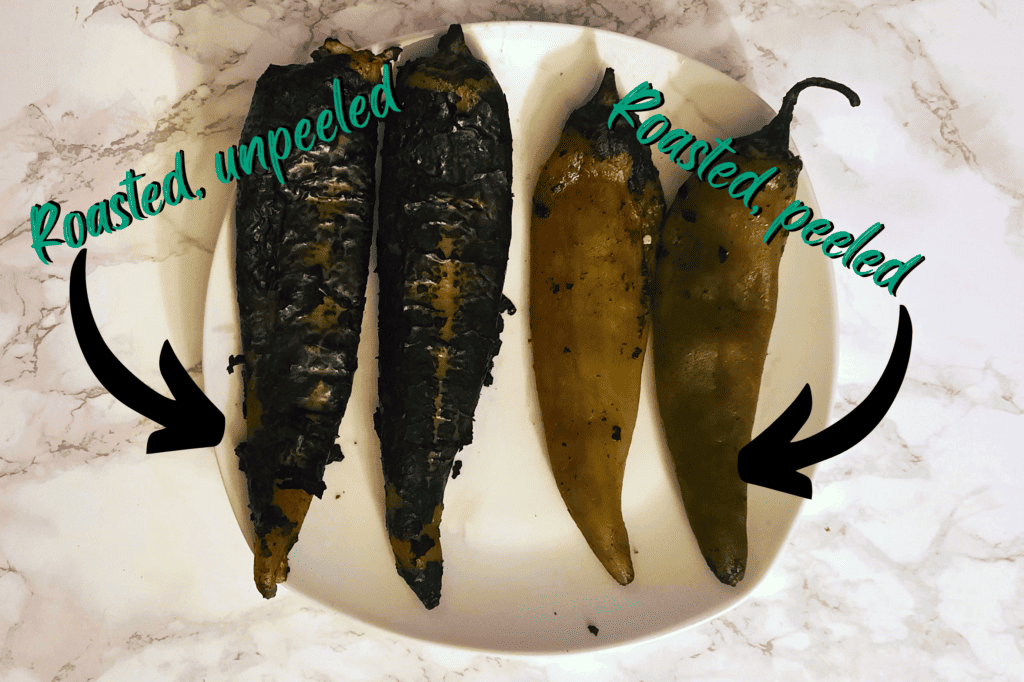What they are, how to find them and how to use them
Intro to Hatch green chiles:
Hatch green chiles are one of those specialty produce items that not everyone knows about but
everyone should. In recipes that call for these New Mexican green chiles there really is NO
substitute that matches their flavor. The smell of roasting green chiles is my number one favorite
fall smell.
What they are:
Hatch green chile is the name for a small variety of peppers grown in and around Hatch, New Mexico (and southern Colorado under the name Pueblo chiles). They can range from mild to extremely spicy. When purchasing, you will be able to select the degree of spiciness you would prefer. They are thick
and sturdy peppers that are roasted until charred and then peeled to reveal a fleshy inside that is
all at once uniquely smoky, sweet and aromatic.
How to find them:
If you’re fortunate enough to live in the American Southwest (and states as far north as Colorado
and Utah) finding Hatch green chiles should be fairly easy. Green chile season runs roughly from
the beginning of August to the end of September. In warmer years, Hatch green chiles can be
found as late as October (there was a stand last year here in Denver still selling all the way into
November!) This is a great opportunity to shop local as many green chile stands are mom-and-
pop operations. You can find them near grocery stores and mercados, outside restaurants and
often, just by the side of the road! When you approach them they will roast your green chiles by
the “bushel”. A “bushel” of Hatch green chiles is sort of a non-standard measurement – it’s usually the size of a laundry basket, and however many fit in that receptacle. For the two of us, a bushel of green chiles is usually enough to last a year in the freezer.
Hatch green chiles are not as easy to find outside of the southwest, however. If you live in
another state (or another country!) do some internet research. There are many, many companies
that will ship Hatch green chiles all over the globe. I would strongly suggest finding a company that
ships from New Mexico (especially from Hatch itself!) as these will be the freshest chiles grown
the correct way in the correct climate. You may also find some Pueblo green chiles available to
ship to your area. These are largely the same chiles (see description below) but grown near and
shipped from Pueblo, Colorado. If you yourself don’t have a chile roaster, I would also strongly suggest confirming that the peppers you get are pre-roasted. You can “roast” them in an oven but
it just isn’t the same.
What to do with them once you have them:
If you have purchased your green chiles locally, they will be most likely given to you in a tied-
off plastic bag. When you take them home you will need to let them cool completely while
steaming in the sealed bag. This can take up to 24 hours. Putting them in the fridge or leaving
them on the counter is up to you- but be warned that if you put them in the fridge they will make
your water pitcher and any open or semi-open containers reek of green chile. I love green chile,
but a 3 am glass of green chile water is a horrifying shock back into reality.
Once they have cooled completely, you can freeze what you don’t plan to use for now. I haven’t
had any trouble freezing chiles for over a year. Take a baking pan and cover with parchment
paper. Place as many as you can in a single layer and pop in the freezer for about an hour,
flipping halfway through. No need to peel them at this point. Once they’re frozen completely
solid and in no danger of sticking together just throw them in freezer zipper bags. You can pull
out as many as you need.
When you are ready to use your green chiles, pull out as many as you need and rinse them under
warm water to thaw. Slide off the charred black outer crust, which should slip off easily. Below is a picture of what unpeeled, roasted Hatch chiles look like compared to peeled. Be sure to peel off most of the crust, but a little remaining char is not a bad thing!

Can’t I just use the canned ones from the grocery store?
These will sometimes do in a pinch for SOME recipes. If green chile isn’t the prominent flavor,
but one of many, as in stews or bean dishes, a can of green chiles is an acceptable- if inferior-
choice. But in recipes where Hatch green chiles are the prominent flavor, such as green enchilada
sauce or posole, the canned green chiles just aren’t going to cut it. I find the canned green chiles
to be significantly less flavorful and complex than their fresh counterparts and often much more
acidic. And of course the vast majority of canned chiles are diced and can’t be used in things like
chile rellanos and other stuffed chile recipes that require them to be whole.
Hatch vs. Pueblo chiles:
Hatch and Pueblo chiles are different but, in my opinion, largely interchangeable in most recipes.
This is probably the most controversial opinion on this blog and chile purists from both states
will fight to the death defending their respective chiles; but in my opinion most of the debate
seems to come down to whose sauce/chili verde recipe is better and that is an entirely different
conversation.
In my experience, Hatch green chiles are thicker with meatier flesh than their northern Pueblo
counterparts. I like the thicker ones best for rellanos. Those from the Hatch region are somewhat
more complexly-flavored but that’s about where the difference ends for me. You can’t go wrong
either way.
What to use them in:
Hatch green chiles are used in all manor of the world’s greatest foods. Use them in enchilada
sauce, chili verde, posole, and stews. They’re the stars of chile rellanos and can be stuffed in
rolled chicken breasts. You can dice them and stir them into queso dips, hash, salsas, chowders,
macaroni and cheese, huevos rancheros, scrambled eggs, or corn bread. Really, most things are
improved by adding some green chiles.
So what’s up with red chiles?
Red chiles, as referenced in recipes like my New Mexico Red Enchilada Sauce are
matured Hatch green chiles that are often dried. After being dried they are hung in ristras, which
are sort of like bunches or bundles and sold. You can also find them sold loose in bags in some
parts of the US in the fall. Buy a ristra! They are beautiful to hang on your wall and the
satisfaction of having chile at any time is the best. Here in Colorado, with our dry climate, dried
red chiles will last for a couple years (if you don’t move through them that fast!). However when
we lived in Tennessee we found that they would mold within a year- so be mindful of your local
humidity when deciding how many to purchase.
